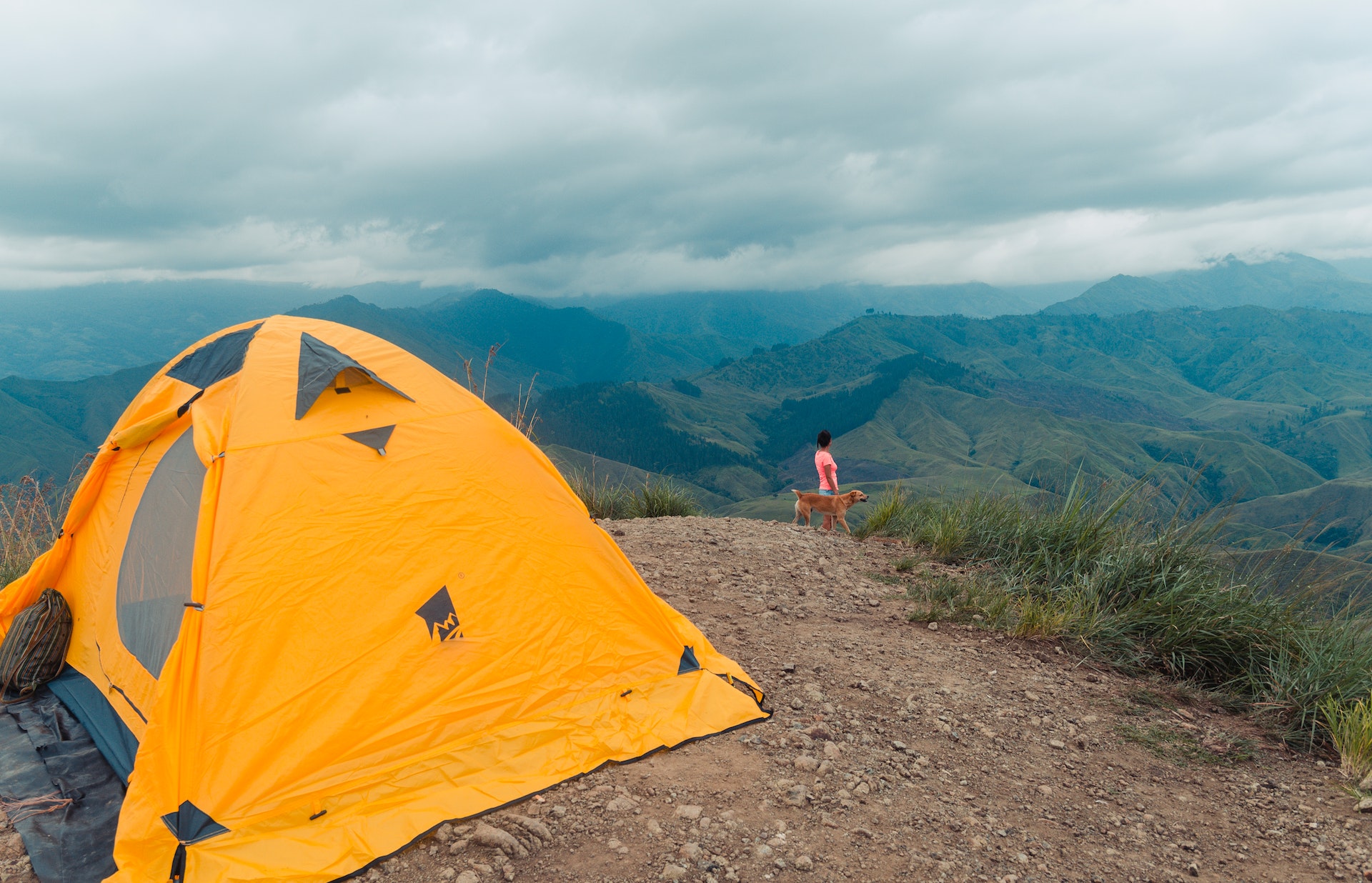Hiking And Camping In The Grand Canyon - Exploring The Backcountry By Foot
Hiking and camping in the Grand Canyon is a thrilling adventure that promises breathtaking views and an unforgettable experience.
Author:Iram MartinsReviewer:Tobey StricklandMay 24, 202357 Shares1.5K Views

Hiking and camping in the Grand Canyonis a thrilling adventure that promises breathtaking views and an unforgettable experience.
The Grand Canyon National Park is one of the most popular destinations for hikers and campers alike, attracting millions of visitors each year from all around the world.
From challenging hikes along the canyon's steep and narrow trails to camping under the stars in its pristine wilderness, the Grand Canyon offers a unique opportunity to connect with nature and discover the beauty of the American Southwest.
Planning Your Grand Canyon Hiking And Camping Trip
If you're planning a hiking and camping trip to the Grand Canyon, there are several things to consider to ensure a safe and enjoyable experience.
Choosing Your Route And Trail
There are several hiking trails in the Grand Canyon, ranging from beginner to advanced levels. The most popular routes include the South Kaibab Trail, the Bright Angel Trail, and the North Kaibab Trail.
Before you select your trail, research the distance, elevation, and difficulty level to ensure that it's a good fit for you and your group.
Obtaining Permits
If you plan to camp overnight in the Grand Canyon, you'll need to obtain a permit from the National Park Service.
Permits are required for all overnight stays, and reservations should be made well in advance. Visit the National Park Service website for more information on permit availability and fees.
Packing For Your Trip
Packing for a hiking and camping trip can be challenging, as you'll need to bring everything you need on your back.
Some essential items to pack include a high-quality backpack, a tent, sleeping bag, stove, water filter, and plenty of food and water.
It's also important to pack appropriate clothing and gear for the weather conditions you'll encounter on your trip.
Understanding Park Regulations
To ensure a safe and enjoyable trip, it's important to understand and follow all park regulations. The Grand Canyon National Park has specific rules and guidelines for camping, hiking, and wildlife encounters. Be sure to read and understand these regulations before your trip.
Planning For Emergencies
Even with careful planning, emergencies can happen on hiking and camping trips. It's important to have a plan in place for emergencies, including knowing the location of the nearest ranger station and carrying a first aid kit.
You should also let someone know your itinerary and expected return date before you leave.
With proper planning and preparation, a hiking and camping trip to the Grand Canyon can be a once-in-a-lifetime experience.

A Guide To Hiking And Camping In The Grand Canyon
Hiking In The Grand Canyon
Hiking in the Grand Canyon can be a thrilling and rewarding experience. Here are some tips to help you make the most of your hiking adventure:
1. Choose The Right Trail
The Grand Canyon offers a variety of hiking trails, ranging from easy, family-friendly hikes to challenging, multi-day treks. It's important to choose a trail that matches your fitness level, experience, and interests. Some popular trails include:
- Bright Angel Trail
- South Kaibab Trail
- North Kaibab Trail
2. Prepare For The Weather
Temperatures in the Grand Canyon can vary greatly depending on the season and elevation. It's important to check the weather forecast before you go and pack accordingly. In general, it's a good idea to bring layers, sunscreen, a hat, and plenty of water.
3. Start Early And Pace Yourself
The Grand Canyon can be hot and crowded during peak season, so it's best to start your hike early in the morning to avoid the heat and the crowds. Take frequent breaks and pace yourself to avoid exhaustion.
4. Leave No Trace
The Grand Canyon is a fragile ecosystem, so it's important to follow the principles of Leave No Trace. Pack out all of your trash and dispose of it properly, and avoid damaging plants and wildlife.
Camping In The Grand Canyon
Camping in the Grand Canyon is a unique and unforgettable experience. Here are some tips to help you make the most of your camping trip:
1. Make Reservations Early
Campsites in the Grand Canyon can fill up quickly, especially during peak season. It's important to make your reservations as early as possible to ensure that you get a spot.
2. Choose The Right Campsite
The Grand Canyon offers a variety of campsites, ranging from developed campgrounds to backcountry sites. It's important to choose a site that matches your preferences and experience level. Some popular campsites include:
- Mather Campground
- Bright Angel Campground
- Indian Garden Campground
3. Prepare For The Environment
Camping in the Grand Canyon can be challenging due to the extreme temperatures, rugged terrain, and limited facilities. It's important to bring appropriate gear and supplies, such as a tent, sleeping bag, stove, and plenty of water. It's also important to be prepared for emergencies, such as sudden storms or injuries.
4. Follow Park Regulations
The Grand Canyon has strict regulations to protect the environment and ensure the safety of visitors. It's important to follow these regulations, such as staying on designated trails, properly storing food, and using established fire rings.
Tips For A Successful Grand Canyon Hiking And Camping Trip
Here are some tips for a successful Grand Canyon hiking and camping trip:
Plan Ahead And Obtain Permits
Before embarking on a Grand Canyon hiking and camping trip, it's important to plan ahead and obtain the necessary permits. Permits are required for all overnight camping and some day hikes within the Grand Canyon.
It's important to note that permits are in high demand, so it's recommended to plan and apply for permits well in advance.
Choose The Right Trail
There are many trails to choose from when hiking in the Grand Canyon, ranging from beginner to advanced level trails.
It's important to choose a trail that matches your fitness level and hiking experience. Research the trails and their difficulty level before selecting the one that suits you.
Prepare Physically
Hiking and camping in the Grand Canyon requires physical fitness and endurance. It's recommended to train beforehand and to be physically fit for the trip. Engage in regular exercise and hikes to prepare your body for the physical demands of the hike.
Be Prepared For Weather Conditions
The weather in the Grand Canyon can be unpredictable and extreme. It's important to check the weather forecast before embarking on the trip and to pack accordingly.
Bring appropriate clothing for different weather conditions, including rain gear, warm clothing, and sun protection.
Pack Lightly And Efficiently
When hiking and camping in the Grand Canyon, it's important to pack lightly and efficiently. Only pack the essentials, such as food, water, shelter, clothing, and necessary gear.
Pack everything in a lightweight and waterproof backpack to make the hike easier and more comfortable.
Leave No Trace
When hiking and camping in the Grand Canyon, it's important to practice Leave No Trace principles. This means packing out all trash and waste, using designated camping areas, and avoiding damaging the natural environment.
Practice respect for the wilderness and leave the area as you found it for future generations to enjoy.
People Also Ask
What Are Some Of The Best Hiking Trails In The Grand Canyon For Beginners?
The South Kaibab Trail and the Bright Angel Trail are two popular trails for beginners. Both trails are well-maintained and provide amazing views of the canyon.
However, it's important to remember that hiking in the Grand Canyon can be challenging, even on beginner trails, so it's important to come prepared with proper gear and supplies.
Is It Safe To Camp In The Grand Canyon?
Yes, it is generally safe to camp in the Grand Canyon, but it's important to take necessary precautions such as storing food properly to prevent encounters with wildlife.
It's also important to follow Leave No Trace principles and pack out all trash to help protect the environment.
What Permits Do I Need For Overnight Camping In The Grand Canyon?
Overnight camping in the Grand Canyon requires a backcountry permit, which can be obtained from the National Park Service. It's recommended to make reservations well in advance, as permits can be in high demand during peak season.
Are There Guided Hiking And Camping Tours Available In The Grand Canyon?
Yes, there are several companies that offer guided hiking and camping tours in the Grand Canyon. These tours can be a great option for those who are new to hiking or want the guidance of a knowledgeable tour guide.
What Should I Pack For A Hiking And Camping Trip In The Grand Canyon?
Some essential items to pack for a hiking and camping trip in the Grand Canyon include a reliable tent, warm sleeping bag, sturdy hiking boots, plenty of water and food, a first-aid kit, and appropriate clothing for the weather conditions.
It's important to pack light and only bring necessary items, as carrying a heavy backpack can make hiking more difficult.
Final Thoughts
Hiking and camping in the Grand Canyon is a truly breathtaking experience that allows you to immerse yourself in the beauty of one of America's greatest natural wonders.
Whether you're a seasoned backpacker or a first-time hiker, the Grand Canyon offers a wide range of trails and campsites that cater to all skill levels.
From the stunning views to the unique flora and fauna, a trip to the Grand Canyon promises to be an unforgettable adventure.
So, pack your bags, lace up your hiking boots, and get ready to explore this majestic landscape!

Iram Martins
Author

Tobey Strickland
Reviewer
Latest Articles
Popular Articles